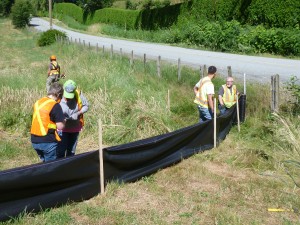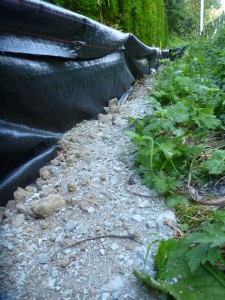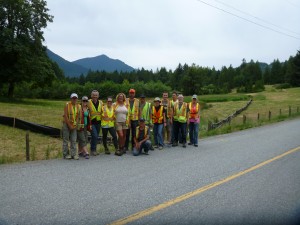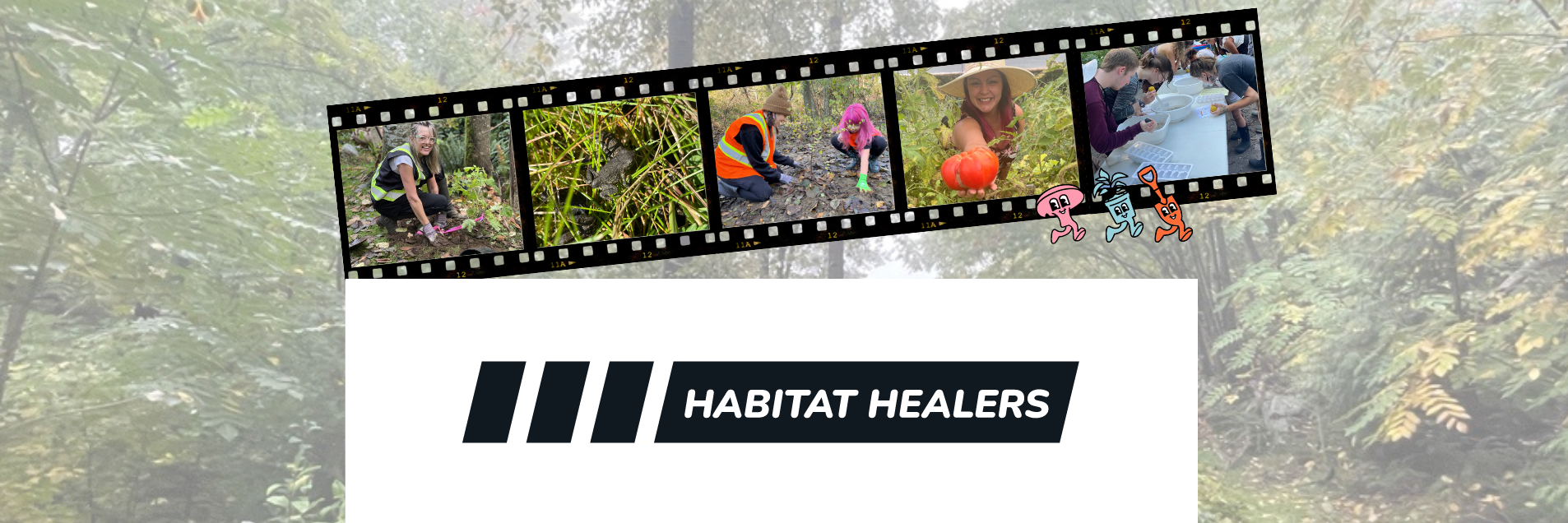On June 24th 2015, a great group of Lafarge Canada employees volunteered to help us install fencing to guide migrating amphibians through the new crossing structure. Ten volunteers and and five FVC staff members installed over 350 meters of directional fencing. Local landowners graciously allowed the FVC to install fencing on their properties which allowed for optimal layout of the fencing. Funding to support the fencing installation was provided by Vancity and the TD Friends of the Environment Fund.
We took inspiration from other projects throughout BC to design our toad guidance system. Due to local site conditions we anticipate having to install and remove the amphibian fencing for each migration. This means our system has to be simple to install and durable. We chose to use silt fencing material (black plastic fabric material used primarily around construction sites for erosion control), wooden stakes, and a staple gun.
To attach the fencing to the ground, so the tiny toads can’t crawl under it, we used two methods. In the forest and along the road we buried a piece of the fabric material with soil and rock. On the hay field, we used old garden hoses and landscape staples to secure the fabric to the ground. Both methods worked to prevent the sub-adult Western toads (“toadlets”) from moving under the fence. We also left a piece of fabric overhanging at the top of the fence to discourage amphibians from crawling over the fence.
Our toad guidance system directed the migrating toadlets to two safe passages across Elk View road. One of which is the new crossing structure installed in early June. The other safe passage was through two existing drainage culverts. These culverts are dry when the toadlets migrate in the summer and provide another way for the toadlets to move safely across the roads towards their foraging grounds in the forests.







